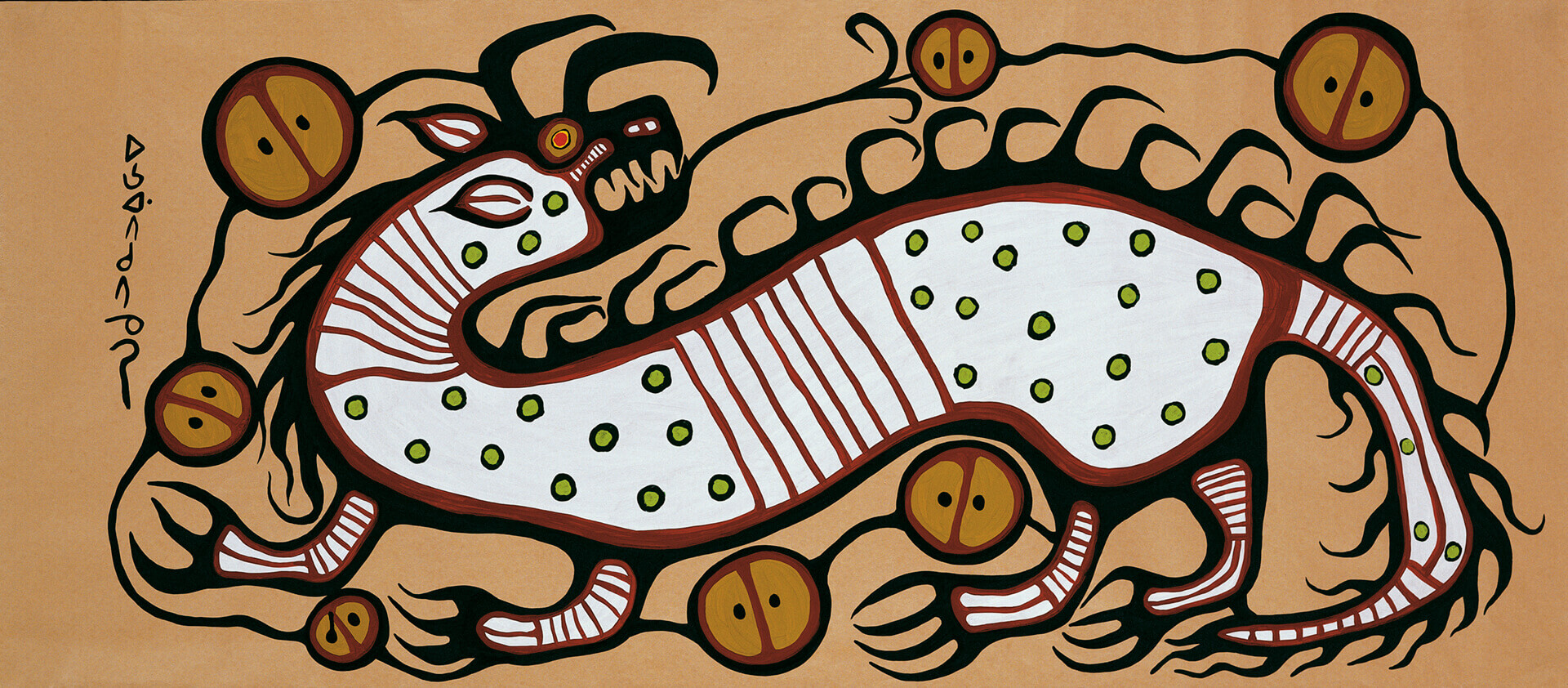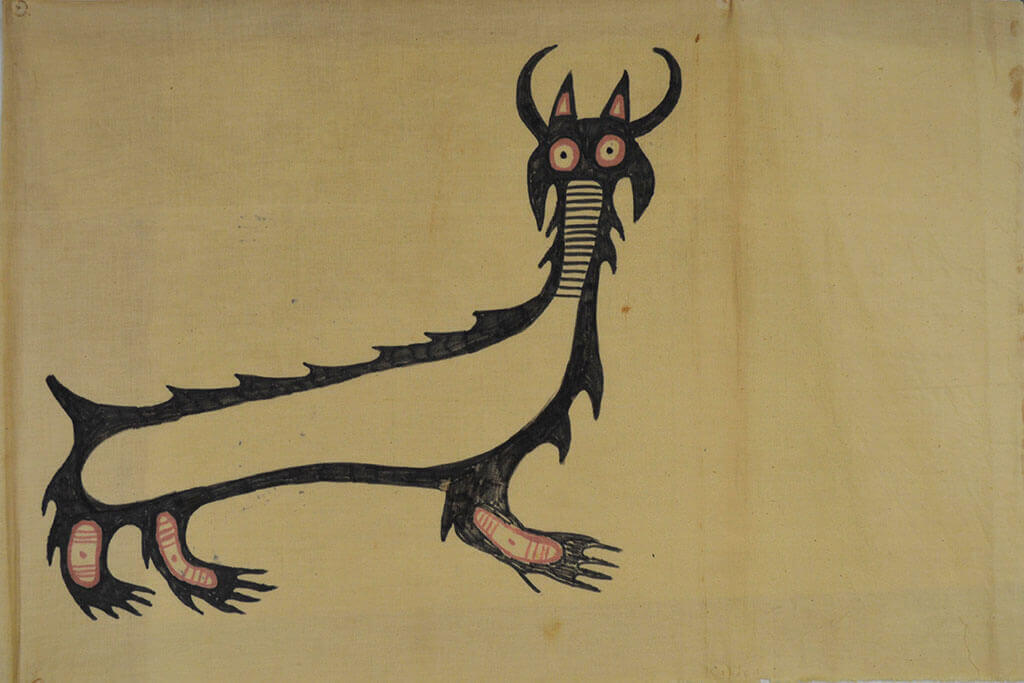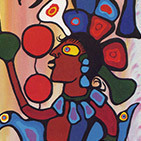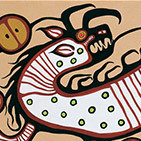Water Spirit 1972

Norval Morrisseau, Water Spirit, 1972
Acrylic on brown kraft paper, 81 x 183 cm
Canadian Museum of History, Gatineau, QC
This painting of Micipijiu, sometimes described as a horned water lynx, shows the power of this manitou, or spirit-being. In Anishinaabe culture, Micipijiu expresses the duality of good and evil. Literary theorist Victoria Brehm argues that Micipijiu underwent a metamorphosis after the period of European contact: once a figure that enhanced social cohesion, Micipijiu came to be seen by shamans as an evil figure, as an effect of Western culture on the Anishinaabe world view. Norval Morrisseau painted Micipijiu more than once, especially during the 1960s and 1970s, but this forceful image imposingly dominates the otherwise blank field and demonstrates the complexities of Morrisseau’s assured artistic practice.


Pictographs of Micipijiu have been found at the ancient Agawa rock art site on Lake Superior in northwestern Ontario, and Morrisseau paints this Micipijiu in an earth-tone palette that recalls Anishinaabe rock art and incised birchbark representations. Yet the work, by its scale, themes, and developed visual language, remains wholly contemporary. As in previous works, strong lines define the image. The interior segmentation of the figure’s body illustrates an incarnation of spiritual and physical power. The circular forms that surround the water spirit represent its dualities (good and evil) and symbolize the megis, the cowrie shell that gives balance in life to the Anishinaabe. The undulating being signifies the turbulent waters of northwestern Ontario lakes, but also tells of the rocky times Morrisseau faced in the ten years after the success of his 1962 debut art exhibition.
This work was featured as part of an international art exhibition entitled Canadian Indian Art ’74 that was held at the Royal Ontario Museum in Toronto and showcased two hundred works by Indigenous people from across Canada. Water Spirit was also included in Morrisseau’s 2006 retrospective exhibition at the National Gallery of Canada in Ottawa and is now part of the collection of the Canadian Museum of History in Gatineau, Quebec, which maintains the largest holding of Morrisseau works.

 About the Author
About the Author
 More Online Art Books
More Online Art Books
 Acknowledgements
Acknowledgements